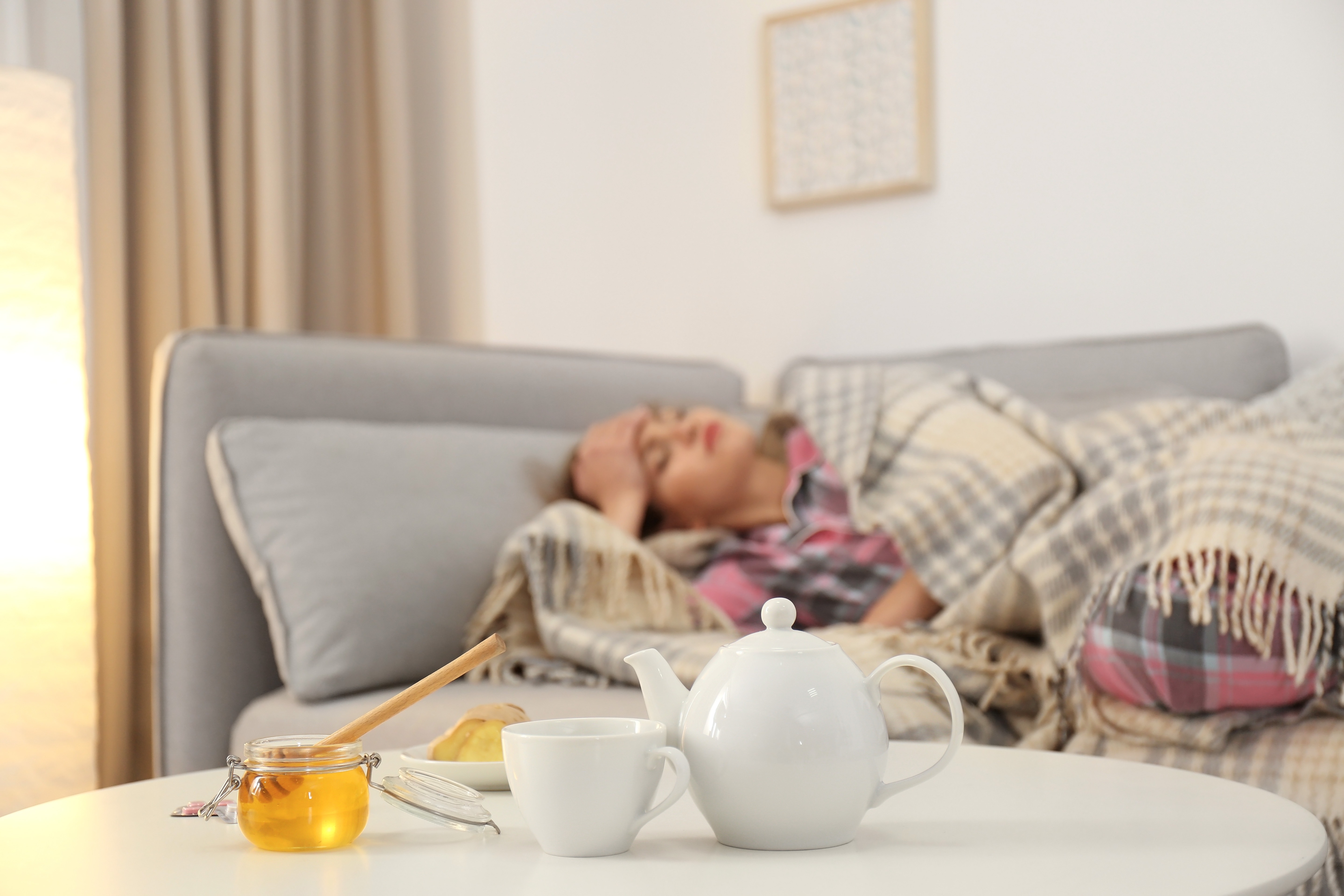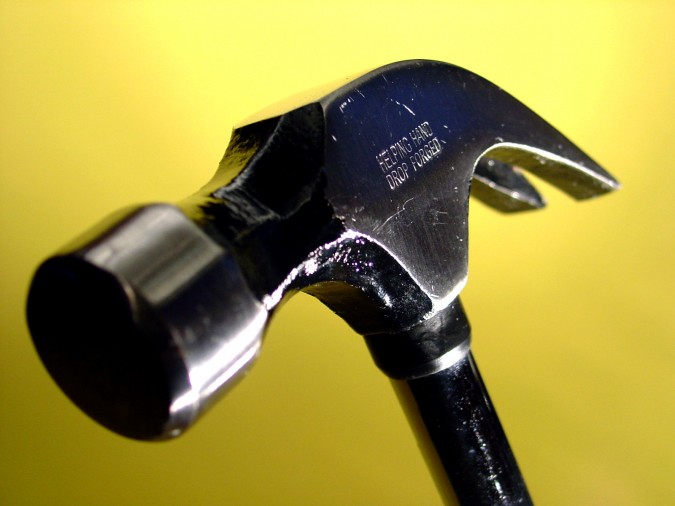The wintertime weather can do a real number on our indoor comfort. Oftentimes, heating your home is only half of the solution. Dry air will continue to be a problem until spring rolls around. For the next couple months, indoor humidity is what really counts for home comfort.
Indiana homeowners tend to think that humidity is a bad thing. But don’t let our hot and extra-humid summers fool you. In reality, a little moisture can help make our air feel great—especially during the colder months.
Problems with Low Humidity Indoors
Dealing with low humidity, or dry air, comes with a slew of problems for you, your family, and even your home. Without a balanced level of moisture in your air, the winter can be a real drag.
1. You can get dry, scratchy skin.
It’s hard to feel your best when your lips are cracked and your hands are looking scaly. Forget the lotion. What your skin really needs is good air. When air has low humidity, it’s a lot easier for our skin to dry out. Moisturizer alone can’t fix the issue. Instead, you have to get the right amount of moisture back in your air.
2. It’s hard on your immune system.
Little known fact: Germs love dry air. It’s easier for microbes to float around when the humidity is low. As a result, more people tend to fall ill in the wintertime. Indoor humidity plays a big role in keeping your family healthy. Because viruses have a harder time moving in moist air, bumping up your indoor humidity can help give you an extra line of defense.
3. Dry air adds to sinus pain.
The moist membranes in your throat and nose work to filter out microbes, and proper humidity helps keep your body’s respiratory system in check. But when the air is dry, it can be hard on our sinuses. Itchy nasal passages get to be pretty painful, and might even cause nosebleeds if your environment isn’t balanced.
4. Your home’s wood might warp and crack.
Low humidity can impact the items in our homes, too. Wood furniture, instruments, and even our flooring can start to take a hit when dry air pulls out the moisture they’ve been holding. That’s why you might find your floorboards creaking more, or that you’re getting some unexpected damage to your belongings. It can also make doors get stuck in their frames.
5. Low humidity creates annoying static.
Although static might not have the same long-term effects like the other dry air problems, this issue is probably the most noticeable! Getting shocked by your pet, the couch, or doorknobs doesn’t have to be a hallmark of the winter season. Static only tends to build up in homes that have excessively dry air.
Reversing the Dry Air Symptoms
There are many different aspects of your health and lifestyle that are impacted by dry air. Fortunately, there’s one easy fix. Instead of trying to address each issue individually, why not tackle them all at once? That’s where a whole-house humidifier can help.
Because these units are installed with your existing ductwork and furnace, they can deliver the right amount of moisture all throughout your home. Whole-house humidifiers are great for homeowners that really want to maximize their comfort—and their health—all year long. Plus, they’re easy to maintain. Once installed, you can have a real fuss-free setup.
There’s no reason to put up with dry air problems this time of year. If you’re ready to have a home that you can really breathe easy in, give LCS Heating and Cooling a call at (317) 238-3961. We love helping homeowners find the right units for their home comfort. Contact us today to schedule an in-home consultation. Then we can make sure a whole-house humidifier makes sense for you and your lifestyle.
January 30, 2018
Talk with any industry expert, and they probably know some funny lingo that’s hard for “outsiders” to follow. In the HVAC world, this can be really frustrating—especially when you’re trying to make an informed decision. That’s where LCS Heating & Cooling comes in. We’re all about taking the mystery out of your systems and repairs!
For starters, it’s good to review what HVAC itself even refers to! The acronym is a mash-up of Heating, Ventilation, and Air Conditioning. Together, these systems are what keep your indoor environment comfy year-round. If you need a refresher on the most common HVAC terms and why the parts matter, just skim through this post. (We promise to keep it simple.)
9 HVAC Terms to Know
At LCS, the solutions we design for your home are meant to provide you with “lasting comfort solutions.” Of course, these HVAC solutions will always change from home to home and between families. That’s why it’s important for us to have a variety of offerings that address specific struggles or concerns.
1. Indoor Air Quality (IAQ)
Most people think of air pollution as just an outdoor problem, but it can also be a major issue indoors. When we talk about systems for indoor air quality (or IAQ for short), the focus is on filtration. Getting rid of lingering odors is only the beginning. The latest air cleaners also work to remove bacteria and dust mites, so you get honestly fresh air—that isn’t masked by perfumes or other chemicals.
2. Heat Pump
These nifty units can help keep your home comfortable through every season! Like air conditioners, these systems are located outside. As the name suggests, a heat pump works to move heat. When it’s hot outside, the heat pump will pull warm air out of your home and push it outside. In the colder months, it helps circulate heat throughout your home by drawing in warm air from outside. (Because even in really cold temperatures, there’s still some amount of heat in air that’s above absolute zero, or -273.15 degrees Celsius!)
3. Compressor
The AC (or heat pump) compressor is what circulates your unit’s refrigerant. The refrigerant liquid then absorbs or releases heat to make your home comfortable. Compressors can either work in a single-stage or two-stage cooling setup. Single-stage cooling is the most common, but two-stage comes in handy if you need extra humidity control or a better efficiency rating. Plus, two-stage compressors also aid in noise reduction.
4. Evaporator Coil
The evaporator coil is located indoors, inside the furnace. It holds the cold refrigerant in your air conditioner or heat pump. When hot air blows over the evaporator coil, the refrigerant warms up and turns into gas. This helps removes that heat from your indoor air, making your home cooler. Heat pumps also use evaporator coils in the wintertime. But then, the process goes into reverse. Instead of sending heat outdoors, it draws warm air into your home.
5. Condenser Coil
Air conditioners and heat pumps use condenser coils to either collect heat or release heat. First, the gaseous refrigerant runs from the evaporator coil to the condenser coil, where it returns to its liquid state. Then, the AC or heat pump fans blow over the condenser coil to either heat or cool your home, depending on what you need.
6. Whole-Home Humidifier
During the dry, winter months, whole-home humidifiers can really help boost your home’s cozy factor. By adding a touch of moisture back to your indoor air, humidifiers help create balance. When your air is too dry, it’s easy to get static and dry coughs and cracked skin. These whole-house systems are great because they work with your ductwork to reach every room. And unlike portable units, you don’t have to worry about adding or changing the water—the system knows how to take care of everything for you.
7. Whole-Home Dehumidifier
A dehumidifier works in the opposite way of a humidifier. Instead of adding moisture to your air, these units work to remove humidity indoors. It’s a perfect solution for Indiana weather because sometimes the humidity is high even when it's not hot outside! And when the temperature isn’t that high, the air conditioner doesn’t run long enough to remove humidity—only a dehumidifier can. So, whether it’s spring, summer, or fall, having a whole-home dehumidifier is a great way to keep your home from feeling too sticky or too dry. What you’re left with is just crisp, clean air.
8. Heat Exchanger
Heat exchangers are found in gas furnaces only. Because that’s where combustion takes place, they basically do the bulk of the work inside your gas furnace. The heat exchanger pulls air into the unit and then transfers heat to warm it up. Once the air is nice and toasty, the blower motor distributes the air throughout your house via the ductwork. Without a functional heat exchanger, your furnace won’t be able to raise the temperature to a comfortable setting during the colder months.
9. Whole-Home Zoning
If your upstairs level is way hotter than downstairs, your home might be a good candidate for whole-home zoning. These setups designate specific areas in your home that get heated or cooled independently. That way, your system doesn’t have to struggle to correct the temperature in every room. By setting a limit on where it runs, you only use energy for the places you really need your unit to run.
HVAC Repairs for Central Indiana
It’s easier to know what’s going on when you understand the terms and process and “WHY” behind each HVAC decision. At LCS Heating & Cooling, we do everything we can to educate you about the equipment in your business or home. After all, a big part of having lasting comfort solutions is understanding what they are!
Frustrated with a touchy thermostat? Not sure why your unit is making that weird, rattling noise? Our team is here to help. We’ll walk you through the problem and always do our best to make sure you’re informed every step of the way.
For great year-round service, check out our Residential Energy Savings Plan. These regular check-ins will make sure all the major features of your HVAC equipment are running smoothly. Call us at (317) 238-3961 to get scheduled before the frost sets in. We look forward to serving you!
September 29, 2017
Dry air in the wintertime drags on and on, even long after the snow melts. It’s just how the season works. But there is an easy way to reverse the dry air issues. A lot of homeowners opt for a whole-house humidifier. It’s an affordable way to get quality indoor air for your family year-round!
What does a whole-house humidifier do?
Like the name suggests—these units take care of the air everywhere in your home. Instead of treating one small area, a whole-house humidifier gives you relief in every single room. It adds just the right amount of moisture back to your air. This can make a big difference in your day-to-day life.
A humidifier helps adjust your home’s dry air. By increasing your relative humidity, the unit:
- Keeps your skin soft in winter
- Improves your immune system
- Reduces allergy symptoms
- Protects your wood flooring, artwork, and instruments
- Minimizes annoying static shocks
Another benefit of having an appropriate humidity level is that it can improve your home’s energy efficiency. Dry air can make your home feel colder than it actually is. But when you add a little moisture back to your air, it helps you regulate your indoor temperature better. Most people feel more comfortable, so they can save on their energy costs instead of cranking up the heat.
What’s the best humidifier for my home?
Choosing the best whole-house humidifier for your family all depends on your home’s size and layout. Steam humidifiers and evaporative humidifiers have similar results, but get installed differently. A technician will need to come out to discuss your setup with you.
We primarily install Aprilaire whole-home humidifiers, but we’ve also worked with Lennox and Honeywell humidifier units. The latest systems are great because they self-regulate. You don’t really have to monitor or check the settings since they’re all automatic. The set-it-and-forget-it control options give you all the benefits of a healthy home humidity level with zero hassle. It’s the perfect fix for dry winter air.
How much does a whole-house humidifier cost?
A lot of people are surprised to learn about how affordable whole-house humidifiers are. It’s a relatively tiny upgrade because the unit works with your existing ductwork and HVAC system. But it still makes a big impact! (Kind of like getting whipped cream on your hot chocolate.)
In general, $700-$920 is the range for regularly-priced bypass and powered humidifiers. If you decide to go with a steam unit, the price is higher because there’s additional work that has to be done with the install.
The great thing about our humidifiers is that installation is already included in the package price. Our pricing is flat rate, so your humidifier package has everything you need to get set up. But even better—at LCS Heating & Cooling, we like to run seasonal specials. If you want to get a great deal on your whole-house system, just reach out to hear the latest savings options.
LCS Humidifier Service and Installation
The first few months of the year are often the best time to get your whole-house humidifier installed. A lot of homeowners want to use their tax rebates on practical home upgrades, and these units are definitely a smart option—especially with the seasonal savings.
Our current LCS Humidifier Special runs through March 31, 2017. Any customers in our greater Indianapolis service area get 15% off their installation. New and current Energy Savings Plan customers will get 25% off their whole-house humidifier installation. Pretty sweet, right?
Improving your family’s air quality is a surefire way to kick the winter blues and get ready for spring. Taking care of your dry air issues now means you’ll be all set for the end of the year and next winter. (And any dry skin and sore throat issues that come with it.) Any other questions on how these systems work? Get your consultation scheduled today to learn more!
February 10, 2017
It can be so difficult to feel cozy in winter when there’s freezing cold air outside and harsh, dry air inside. If your skin is dry or itchy, or it seems like you’re getting shocked every day in your home, you’re probably suffering from low humidity.
Fortunately, a humidifier can offer an easy fix. A lot of homeowners use a whole house humidifier to keep dry air away and get their home’s humidity levels between 30 and 45 percent. Regulating your indoor air does wonders for creating a comfy-cozy home during the cold months. Once you’ve got one of these systems installed, you’ll wonder how you ever made it through winter without it!
5 Reasons Why Homeowners Love Whole House Humidifiers:
1. Helps prevent disease and offers allergy relief.
Having some moisture in the air is actually good for breathing. It helps your body block dust, dirt, or bacteria and viruses from entering your lungs and making you sick. The right humidity levels in your home will help protect your respiratory and immune system, whereas dry air just makes it harder for us to stay healthy.
We don’t usually think of having allergies in winter, but dust mites and other indoor allergens like pet hair are still around every season. And because our indoor air gets drier when we turn our heaters on, these allergens have easier ways of spreading. Boosting your air moisture to the right levels can prevent those irritating particles from getting into your lungs. The right humidity levels help keep your body’s natural defenses strong.
2. Keeps skin soft and helps with chapped lips.
Low humidity will attack your skin and dry it out, and flaky, itchy, or rough skin are sure signs of dry air in your home. In extreme cases, your skin may even crack or show symptoms of eczema.
Installing a humidifier helps your skin stay hydrated year-round. A whole house humidifier improves your air quality and gives you a comfortable air moisture level all throughout your home so you don’t have to apply lotion multiple times a day. With good home humidity levels you’ll notice your lips are better protected in winter too.
3. Protects hardwood floors, door jambs, and furniture.
Just like your skin, your wood furnishings can start to crack with dry air. When humidity levels are too low, the air in your home will try to find moisture wherever it can—which means your hardwood floors, walls, door jambs, furniture, and even your piano are at risk of drying out, shifting, or splitting.
Preventing dry skin is great, but proper humidity levels also go a long way in maintaining the structure of your home. This can be one of the most costly problems related to dry air. Think of it this way: A whole house humidifier not only helps protect every room in your home, but also everything in it!
4. Stops annoying static!
Static electricity goes wild in dry air, and it’s easy to get shocked in winter with low humidity. Returning some moisture to your home’s air helps keep static from building up. There a lot of bizarre tricks (like putting a safety pin on your shirt collar!) you can try to remove static electric in your home, but getting a humidifier is your best bet.
It’s a lot harder to get shocked when your humidity is in check. Whole house humidifiers keep humidity levels at a comfortable 30 to 45 percent in winter. When they’re up and running, you don’t have to be shy about petting your cat or dog, brushing your hair, or giving someone a hug—the static shouldn’t bother you anymore.
5. Lets you breathe better and sleep easier.
Dry air can lead to dry throats, dry coughs, and even nose bleeds. A lot of homeowners find extra health benefits in their sleep with a whole home humidifier.
Nasal passages can feel irritated when humidity levels are too low in winter, but regulating moisture with a humidifier can help you feel better both day and night! A whole home humidifier can often improve your breathing and sleep schedule because you’re less likely to wake up with a dry cough or sore throat when your air moisture is at a comfortable level.
For more information about whole house humidifiers, check out our quick humidifier video on YouTube and other “How To” clips on our video page. There’s no reason to stay static-y in winter! If you’re ready to be done with dry air for good, reach out to your local heating and cooling experts to find a humidifier that’s right for your home.
February 18, 2016
Wreck or Protect? How Water Affects Your Appliances
A guest blog article by: Indy Soft Water
We all want to get the most out of our home appliances, but one of the biggest ways to prevent repairs (outside of regular maintenance services) is something so simple, we often forget it—our water! The kind of water you use in your home goes a long way in either wrecking or protecting your water-using appliances. Without the right water systems in place, you’re making your appliances age a whole lot faster.
Tap water in Indiana is notoriously “hard.” This means that it has high levels of dissolved minerals that can damage your appliances. While these minerals are naturally-occurring (calcium and magnesium compounds get picked up from rocks during the water cycle), hard water is a real nuisance around the home.
These are some of the top symptoms of hard water:
- Water Spots on your “clean” dishes
- Crusty Buildup on your shower head and around your faucets
- White Film inside your tea kettle or pots after boiling water
- Soap Scum in your sinks or around the bathtub
Hard water leaves minerals behind when it evaporates from your dishes and bathroom fixtures. Unfortunately, it also leaves these deposits in places you can’t see—like in all in the intricate parts of your appliances. These deposits build in rock-hard layers called “lime scale.”
The inner workings of your dishwasher, laundry machine, water heater, and humidifier all fall victim to lime scale buildup when your home uses hard water. Your water heater is particularly vulnerable against hard water. Sediments and lime scale build up on the bottom of your heater and on other internal parts. With too much hard water sediment at its base, your water heater can overheat, damage its electrical parts, and basically render the system useless by reducing capacity and efficiency. Because the scale is heated first, rather than the water, your system ends up wasting energy and your water won’t get as hot as it should be. All the more reason to get preventative maintenance services scheduled!
Similar hard water problems can occur with a whole-house humidifier, too. As more and more minerals pile up on your system they’ll interfere with how well your humidifier functions by plugging the solenoid valve, that open/close device that allows water to flow. Keeping a clean humidifier—and water heater—has a lot to do with using water that’s “soft,” instead of hard water.
This is why people love soft water:
- Spot-free dishes
- Hair feels smoother
- No more mineral buildup
- Soap lathers and rinses better
- Longer lifespan for water-using appliances
- And the list goes on...
A lot of homeowners choose to install a water softener system because it removes the minerals in hard water and helps protect their major home appliances from getting sediment buildup. Like the name suggests, when you have a softener in place, your home’s water becomes wonderfully “soft!”
Got any questions about whether a water softener is right for you? Check out the Indy Soft Water website, send us a message, or call 31-228-9822. We’ve been your local water experts since 1964, and we’re always happy to chat!
Indy Soft Water is proud to serve the following Indiana areas: Carmel, Fishers, Greenwood, Indianapolis, Noblesville, Westfield, and Zionsville.
November 30, 2015
It's Time for a Whole House Humidifier!
Have you noticed that your skin feels a little dry and itchy? Are you getting shocked by everything you touch in your house? Are your plants looking a little wilted? Are you waking up in the middle of the night with a nose bleed? Do you notice cracks in your hardwood floors? If you said "yes" to any of the above, then you are a victim of harsh winter air! There has to a solution to these problems, right?
We like to think there is a solution for everything! One of our technicians was in a house yesterday in which there were cans of water on every register. That's one way to get humidity in the house! I'm sure you're also familiar with portable humidifiers. Keep a portable humidifier filled with water and you will certainly be able to add humidity to that one room. However, the best solution is a whole house humidifier.
What is a whole house humidifier? A whole-house humidifier is installed on the ductwork next to your furnace. The humidifier distributes moisture throughout the entire house. A sensor is located either in the humidistat control or on the thermostat. When the humidity level in the house drops below the set level (usually 30-40%), the humidifier will run.
How do I care for a whole house humidifier? The best thing about a whole house humidifier is that it requires very little maintenance! While a portable humidifier has to constantly be filled with water, the whole- house humidifier operates on its own. Annual maintenance is recommended to clean it, check the wiring, check/tighten the valves, clean the drain and change the pad. If you have hard water, it might be a good idea to clean the drain and change the pad twice a year.
What's the difference between having a humidistat and a thermostat to control humidity? Whole house humidifiers come with a manual humidistat. The sensor is located in the humidistat. The humidistat is manually set to control the humidity level in the house. Some thermostats also come equipped with a humidity sensor. In this case, the thermostat would replace the humidistat. The advantage to this would be in accuracy of humidity levels. A digital thermostat is always going to be more accurate than a manual humidistat.
Are some humidifiers more efficient than others? Humidifiers are measured by how many gallons of water are used each day. Most humidifiers will use either 12 gallons per day or 18 gallons per day. Steam humidifiers are the most efficient, however, it is very strongly recommended that very high quality water be used with steam humidifiers. Calcium and lime will build up much faster in a steam humidifier due to the extremely hot temperatures that the water runs at.
Please don't hesitate to contact us with any other questions you might have about whole house humidifiers! There's no doubt that once you have a whole house humidifier, you'll wonder how you ever lived without one!
Making a Statement with HVAC in Indianapolis
We love jobs in which the homeowner or business owner wants to make a statement. Maybe their home is in a historical district and they want (or need) the home to reflect that. Perhaps the homeowner lives in a condo and wants an "industrial" feel. Maybe the homeowner has eclectic taste and wants that to shine through. Maybe the restaurant owner wants to create a specific atmosphere for his customers. Whatever the job may be, we love the creativity and challenge involved in working the heating and cooling into the master plan.
We recently completed a job for a couple that purchased a home in Fountain Square, Indianapolis. The home was in bad shape; another house beside it has actually been torn down. This couple worked with their contractor and gutted the home. While they left some things in place, such as the staircase, they opened everything else up in order to bring their vision to life. As discussions started regarding the heating and cooling, they shared the things that they viewed as most important: An industrial look on the inside, efficient and quiet equipment, and humidity control topped their list.
We came up with a plan to meet all of their wants and needs...plus a couple of other perks! The finished HVAC project includes a Lennox high efficient 17 seer heat pump with a variable speed air handler. This heat pump is so quiet that when they step out their back door, they can't hear it! A bonus to this system is that it is solar ready. In the future, they can add solar panels to their roof to power the heat pump. The Lennox communicating wifi iComfort thermostat also gives them the ability to control their HVAC equipment through their phone, tablet or computer. Many two story homes have a problem with temperature differences between the first and second floors. Their home will be zoned to drastically reduce temperature fluctuation. A whole-house humidifier was also installed to create optimal humidity levels throughout the house.
Now, on to the look. We used galvanized, exposed spiral ductwork to create the industrial look they were after. The ductwork is used in the kitchen, living room, bedrooms and halls. It matches the look of their lighting and appliances. In addition, we kept 99% of the ductwork out of unconditioned areas. This will create a lighter load on the equipment during peak hot and cold days, resulting in lower utility bills.
The transformation of this house is amazing and it was a lot of fun for us! Who said HVAC can't be functional and eye catching!?





